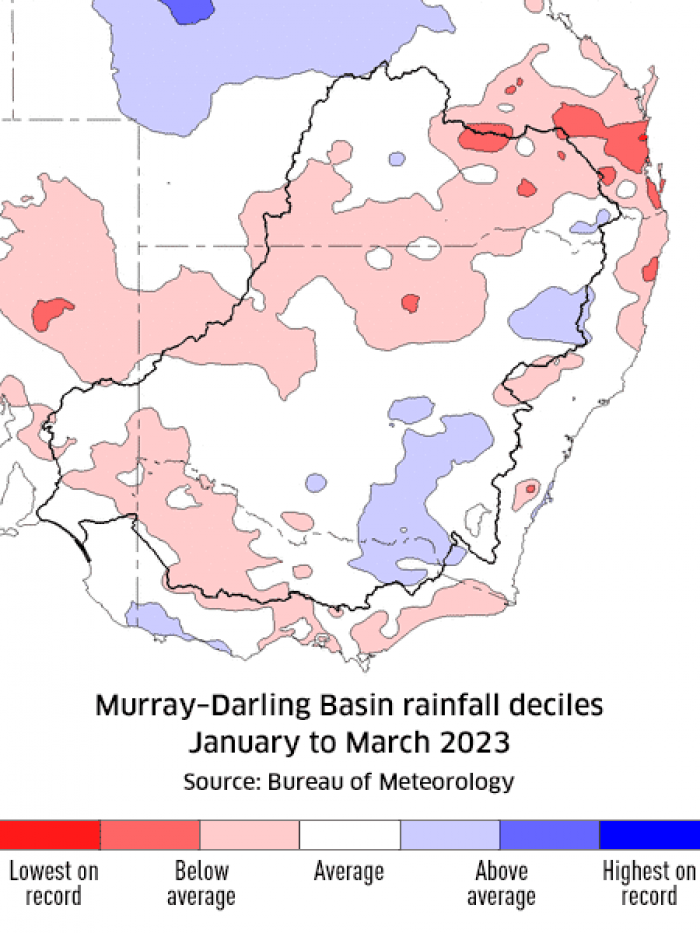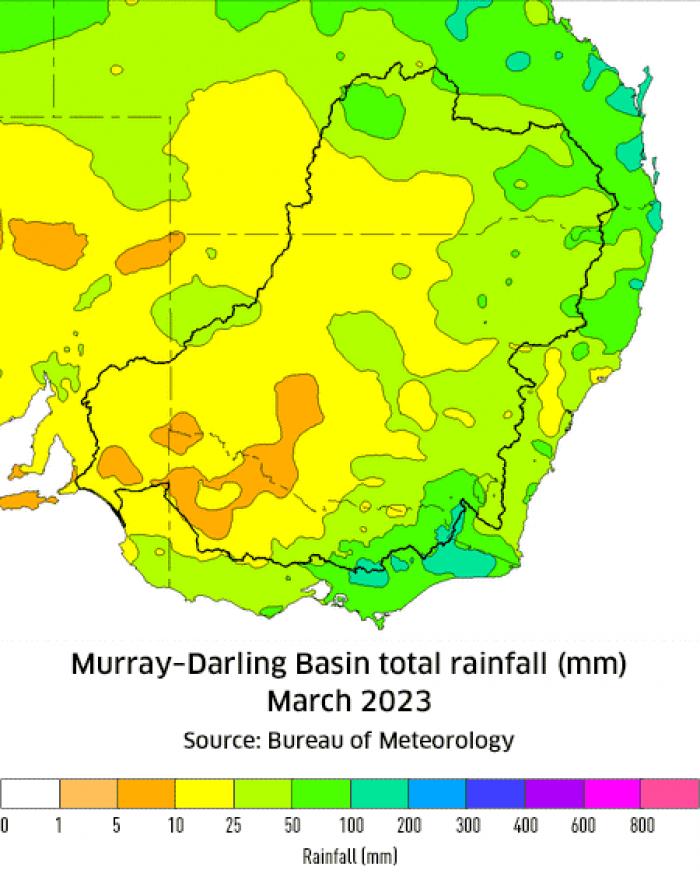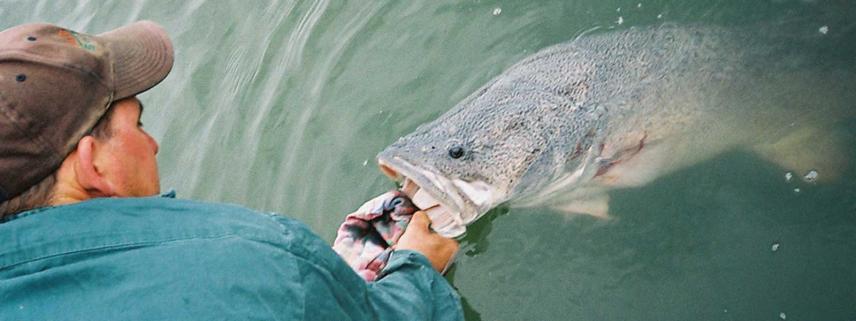- Weakening La Niña leading towards drier conditions
- Water storage levels remain high despite lower inflows
- Spotlight: Native Fish Forum 2023

Drought
From January to March rainfall in much of the northern Basin was below average, stretching down the Darling River. Regions of the Carnarvon Range on the northern edge of the Condamine catchment were more significantly impacted.
Rainfall was also below average in south-western catchments, including the Wimmera–Avoca and Lower Murray.
Areas of the Great Dividing Range received above-average falls.
When viewed at longer timescales (12 or 24 months) rainfall deficiencies trend from above average to highest on record, suggesting that the current situation is a result of weakening La Niña conditions.
New record-high March temperatures were set in several areas of the Basin, including Mildura (42.5°C), Cobar (42.3°C) and Wagga Wagga (39.9°C).

Rainfall
Basin rainfall was widespread during March, with all catchments experiencing rain. The average across the Basin was 46.1 mm – 8% above mean.
As shown in the graphic on the left, rainfall varied from 5–10 mm in the south-west through to more than 100 mm in eastern Victorian and southern New South Wales ranges.
Falls Creek in Victoria recorded the highest rainfall with 233 mm across March. Further north, Texas on the New South Wales–Queensland border received 224 mm. Gunnedah and Tamworth also recorded above 200 mm.
Water storages and streamflow
Public water storages across the Murray–Darling Basin remain higher than the same time last year, although levels have fallen slightly from last month.
As at 29 March total storage in the Basin was 19,803 GL (89%). Southern Basin storages fell 5% (to 88% of capacity), while northern Basin storages remained steady at 90%.
Operations at Menindee Lakes are being adjusted in response to low dissolved oxygen levels downstream of Main Weir. Storage levels at Menindee were 89% (29 March).
Unregulated flows in the Darling (Baaka) river have now ceased, with the flow above the required minimum released on behalf of environmental water holders to help improve water quality.
Flows in the Murrumbidgee River were affected by a combination of high rainfall and low irrigation demand, resulting in increased inflows into the Murray.
Flows to South Australia were at around 25,000 gigalitres per day, with the volume of unregulated flows sufficient to negate additional releases from upstream storages.
The Barrages passed unregulated flows through to the Coorong and Southern Ocean throughout March.

Climate and water forecast
The Bureau is forecasting below median rainfall for most of Australia for May to July, with maximum temperatures very likely to be warmer than average.
Areas of the Basin have a moderate to very high chance of unusually dry conditions, where rainfall would be in the lowest 20% on record.
This expected lower rainfall would result in reduced streamflows in the Basin towards spring, impacting storage levels over the following summer.
As a result of dry conditions and above average temperatures, north-eastern New South Wales and Queensland catchments are forecast to have above normal fire potential.
Drying conditions are being influenced by a weakening La Niña, trending towards El Niño into winter. There is also a chance that a positive Indian Ocean Dipole will develop in the coming months.

Water quality
The likelihood of water quality issues is gradually reducing as conditions become cooler. Basin rivers and storages are nutrient rich and conditions remain favourable for blue green algae outbreaks. In the lower Darling (Baaka) there is still a risk of low dissolved oxygen levels as floodwaters recede.
The Murray–Darling Basin Authority and state authorities monitor water quality conditions across the Basin year-round. For more information on water quality and a map of threats, see the water quality page of our website.
Summary of key water quality issues
- Hypoxic blackwater: Hypoxic blackwater is no longer a significant risk in most systems as floodwaters have receded.
- Low dissolved oxygen: In the lower Darling (Baaka), dissolved oxygen levels generally remain near or above critical ecological thresholds.
- Blue-green algae: There is currently a risk of blue-green algae across most parts of the Murray–Darling Basin, particularly in New South Wales. For the latest information on blue-green algae alerts, contact the relevant state government contacts via the Getting information about current algal blooms page of our website.

Spotlight – Native Fish Forum coming to Dubbo in May
Native fish lovers, including recreational fishers, First Nations People, environment enthusiasts and natural resource managers, are invited to attend a Native Fish Forum coming up in Dubbo next month.
The 3-day forum is presented by Finterest and will showcase the work of the native fish recovery strategy and share information about the ongoing activities to support native fish. Finterest provides a platform for sharing stories and information about the work happening across Australia to boost native fish numbers.
The forum includes a field trip to see the work of Dubbo locals helping native fish move through the waterways, keeping them out of pumps, protecting them in dry times and repairing their habitats.
A range of topics will be presented by scientists, practitioners, sector experts, First Nations People, community members and anglers.
The forum will provide the opportunity for people who care about protecting our native fish to connect with like-minded people and celebrate, discuss and learn about native fish recovery.
There’s still time to register for the Native Fish Forum, taking place at the Western Plains Zoo in Dubbo, New South Wales from 3–5 May 2023.